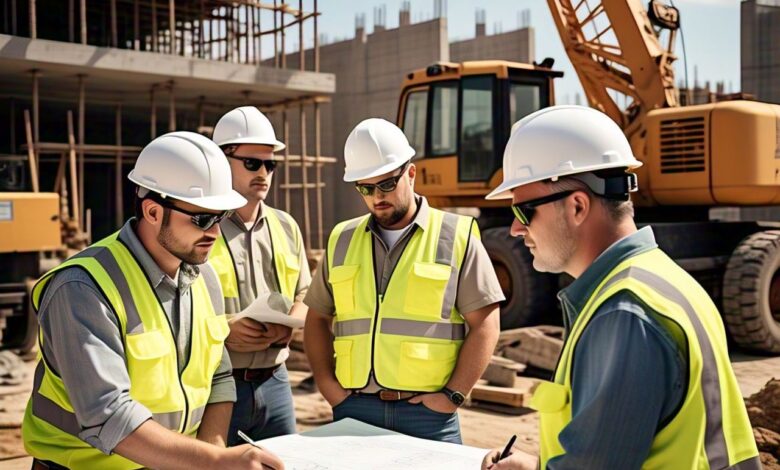BIM Construction: The Future of Sustainable and Cost-Effective Building

Building Information Modelling (BIM) has rapidly become the cornerstone of modern construction, revolutionising how to design, plan, and build. As technology continues to advance, BIM is proving to be a game changer in the industry, particularly in terms of sustainability and cost-effectiveness.
The growing demand for efficient, eco-friendly construction methods has made BIM a top choice for architects, engineers, contractors, and developers. With the increasing need to reduce environmental footprints and control budgets, BIM construction offers unmatched benefits in both areas.
This article explores how BIM is transforming construction practices, making buildings smarter, greener, and more affordable. You will learn how BIM helps create sustainable structures, improve project outcomes, and deliver long-term cost savings.
What is BIM and How Does it Work?
BIM is more than just 3D modelling. It’s a digital representation of a building’s physical and functional characteristics. Through BIM, every detail, from architectural designs to structural elements and systems, is digitally documented and managed. This allows everyone involved in the project—from designers to contractors—to access and collaborate on a single, accurate source of information in real-time.
BIM goes beyond simple visualisation; it integrates all aspects of a construction project, including costs, materials, schedules, and even energy performance. This creates a comprehensive view of the project, enhancing decision-making and streamlining the process.
The Role of BIM in Sustainable Construction
Sustainability is a key focus in the construction industry. As environmental concerns rise and regulations become stricter, builders are increasingly seeking ways to minimise the ecological impact of their projects. BIM plays a crucial role in this shift towards sustainability.
1. Energy-Efficient Design
BIM allows for detailed analysis of a building’s energy performance before construction begins. Through simulations, you can test various materials, systems, and designs to determine which ones will minimise energy use, reduce waste, and lower operational costs in the long run.
For example, BIM tools can optimise natural lighting, HVAC systems, and insulation, ensuring the building is as energy-efficient as possible.
2. Sustainable Material Selection
BIM helps in selecting eco-friendly materials by analysing their environmental impact. Whether it’s low-carbon concrete, sustainably sourced timber, or recyclable materials, BIM provides the data needed to make informed decisions. This process not only helps reduce a building’s carbon footprint but also promotes the use of renewable resources, which are essential for sustainability.
3. Waste Reduction
Construction waste is a significant concern in the building industry. BIM helps reduce waste by providing accurate, detailed models that minimise errors in the design and construction phases. This precision ensures that only the necessary amount of materials is ordered, reducing excess and waste. Moreover, it enables better planning for recycling and repurposing materials during the project.
BIM: Enhancing Cost-Effectiveness in Construction
One of the biggest challenges in construction projects is staying within budget. BIM helps manage costs by providing a detailed and accurate representation of every aspect of the project. Here’s how it can make construction more cost-effective:
1. Accurate Budgeting and Cost Estimation
Traditional budgeting methods often rely on approximations, which can lead to cost overruns. With BIM, costs are calculated in real-time, using actual material quantities, labour hours, and other project-specific factors. This accuracy helps avoid unexpected costs and ensures that resources are allocated efficiently throughout the project lifecycle.
Streamlined Scheduling and Time Management
Time is money, and delays in construction projects can lead to significant financial losses. BIM allows for precise scheduling, helping to anticipate and resolve potential issues before they arise. With 3D models and construction simulations, you can optimise timelines, ensuring that each phase of the project is completed on time. This reduces costly delays and accelerates the overall construction process.
Better Collaboration and Fewer Errors
BIM fosters better communication and collaboration among project teams, ensuring that all stakeholders are working from the same set of data. This reduces misunderstandings and errors, which can be expensive to fix. With BIM, you can detect design conflicts and resolve them early in the process, saving both time and money during the construction phase.
BIM and the Lifecycle of a Building
BIM’s impact doesn’t end once construction is complete. In fact, one of its greatest strengths lies in its ability to improve a building’s performance over its entire lifecycle.
1. Building Operations and Maintenance
Once a building is operational, BIM continues to provide value through its digital models, which can be utilised for ongoing maintenance and operations. Facility managers can access detailed information about the building’s systems, such as HVAC, electrical, and plumbing, making it easier to maintain and troubleshoot.
Additionally, BIM can track maintenance schedules, ensuring that everything is serviced regularly, thereby extending the building’s lifespan and reducing repair costs.
2. Renovations and Upgrades
As buildings age, renovations and upgrades are inevitable. BIM enhances these processes by providing an accurate and up-to-date digital record of the building. This enables seamless planning and execution of renovations, as designers and contractors have all the necessary data readily available.
BIM models can also help determine the best ways to improve energy efficiency during renovations, thereby further enhancing sustainability.
3. Decommissioning and Demolition
At the end of a building’s life, BIM can assist in the decommissioning and demolition process. The digital models provide insights into how to safely dismantle the building, recycle materials, and minimise environmental impact.
This is a crucial step in sustainable construction, as it ensures that the waste generated during demolition is minimised and properly managed.
The Future of BIM Construction
As technology continues to evolve, BIM’s capabilities will only expand. The integration of artificial intelligence (AI), machine learning, and Internet of Things (IoT) devices will make BIM even more powerful. Here’s a look at what the future holds for BIM in the construction industry:
1. AI-Driven Design Optimisation
AI can analyse vast amounts of data in real-time, helping optimise building designs based on factors like energy efficiency, cost, and environmental impact. As AI becomes more integrated with BIM, it will enable even more precise and sustainable design decisions, taking construction efficiency to the next level.
2. IoT-Enabled Construction Monitoring
The use of IoT sensors in construction sites will provide real-time data on everything from equipment performance to worker safety. When combined with BIM, this data will help ensure projects run smoothly and safely. IoT-enabled BIM models will allow for continuous monitoring and improvement, ensuring buildings are not only constructed efficiently but also perform optimally throughout their lifecycles.
3. Collaborative Cloud-Based Platforms
As cloud technology advances, BIM will become even more accessible to teams spread across multiple locations. Cloud-based BIM platforms will allow architects, engineers, contractors, and developers to collaborate in real-time, no matter where they are in the world. This will streamline communication, reduce delays, and improve the overall project outcome.
Conclusion
BIM is transforming the way we approach construction. By providing detailed, accurate, and collaborative tools, BIM construction enables architects, engineers, contractors, and developers to create buildings that are not only sustainable and energy-efficient but also cost-effective and long-lasting.
Through its ability to optimise design, reduce waste, enhance collaboration, and streamline the entire construction process, BIM is paving the way for a future where buildings are smarter, greener, and more affordable.
As technology continues to advance, BIM will undoubtedly play an even bigger role in shaping the future of construction, driving innovation, and ensuring that the buildings of tomorrow are built to last.

